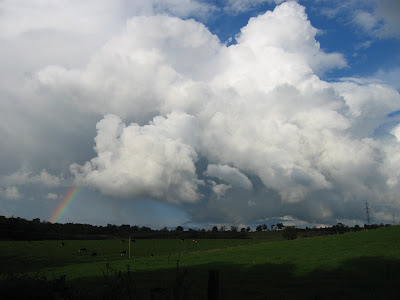DERIVING FROM the Gaelic glas chu meaning ‘blue-green hollow’ Glasgow is a city surrounded by hills. Nestled somewhere between highlands and uplands, and carved out by the passage of glaciers some 15000 years ago, Glasgow is a city enveloped by ancient residue. To the west and the north there are the stratovolcanic ranges of the Kilpatrick Hills and the Campsie Fells; to the south there are the Kilmacolm Hills, the Renfrewshire Hills, the wonderful Glennifer Braes.
These hills combine to describe one of the Glasgow’s greatest assets - its dynamic panorama. Surprisingly, this never seems to feature in any of the carefully groomed guidebooks that continually present the city as little more than a collection of pubs and shops, defunct shipyards and grey foreboding skies.
For the once heavily industrialised metropolis, it is only relatively recently that Glasgow, in moving away from heavy industry, has wheeched off its perma-stoor veil and allowed from this ring of hills views of itself, and of the furthers beyond.
Not only can we see the city, but on a crisp dry day, it is possible to see the jagged peaks of the Highland range, the gentle contours of the Cowall Peninsula and the western isles, and the abrupt adumbration of Ailsa Craig wallowing in the Atlantic. Such prospectuses render Glasgow more than just a city. They reveal, in fact, an unbroken connection between city and country, and between land and sea.
Once in his life a man ought to concentrate his mind upon the remembered earth. He ought to give himself up to a particular landscape in his experience; to look at it from as many angles as he can, to wonder upon it, to dwell upon it. He ought to imagine that he touches it with his hands at every season and listens to the sounds that are made upon it. He ought to imagine the creatures there and all the motions of the wind. He ought to recollect the glare of the moon and the colours of the dawn and dusk.
Navarre Scott Momaday In the Presence of the Sun
In my room, the world is beyond my understanding; but when I walk I see that it consists of three or four hills and a cloud.
Wallace Stevens Of the Surface of Things
'Earth Turn', west over Knightswood, (from the 19th floor of Lawers Tower in late February). The cleft of the Cowall Peninsula in the Atlantic (about 60km away) is quite clearly visible in the backlit distance. Hills are not the only places to proffer grand prospectuses. Glasgow's many drumlins and high rises mean that a view is never far away.
















































